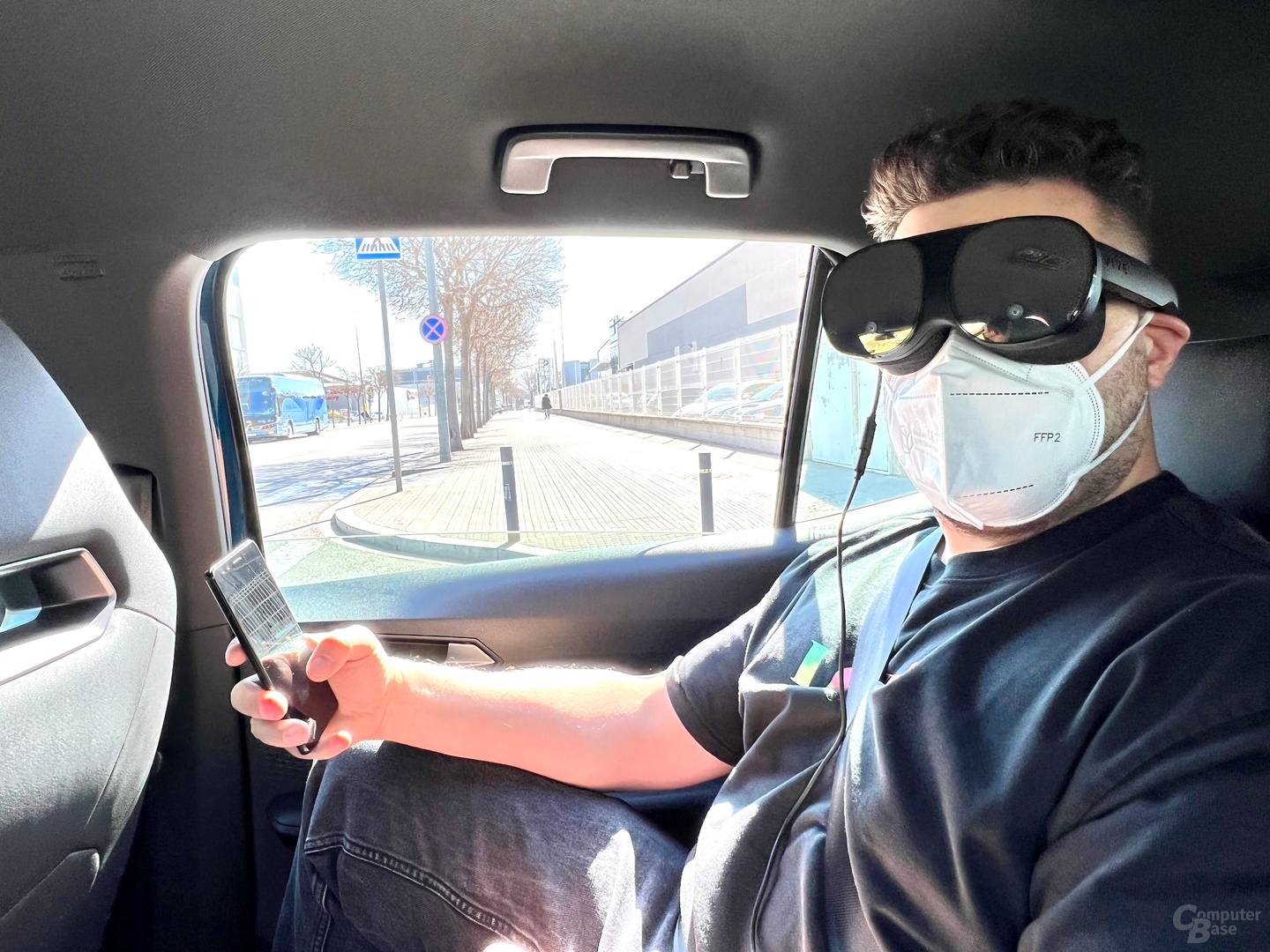In the second half of the year, the serial integration of Holoride into cars should take place. With Vive Flow, passengers can immerse themselves in a virtual reality world that is fed with data from the vehicle, such as position and acceleration. Publishers were able to experience the first two applications at MWC. Nobody got tired of it.
You know this very well from smartphones or books: if you stare at the screen for too long while driving, while the world rushes into the peripheral field of vision and at the same time a wide variety of centrifugal forces act on the body, many people more or less quickly they get dizzy. Holoride encapsulates the solo passenger supposedly entirely from the real world. Instead, vehicle data is linked to the experience in Vive Flow, allowing the user to immerse themselves in a virtual world but never completely lose touch with the real world. This greatly helps prevent the usual symptoms.
A holoric walk through the fairgrounds
At MWC Barcelona, ComputerBase got an up-close look at Holoride, which will be offered in series for the first time in a vehicle at Vive Flow in the second half of the year. An electric Cupa Born was used in Barcelona, the somewhat sportier offshoot of Volkswagen’s ID.3, so to speak. Which car manufacturer will officially integrate Holoride in the course of the year was not yet ready for the fair in Spain. However, the proximity to the VW Group cannot be argued, after all, Audi also has shares in the company and the first public demonstration took place at the beginning of 2019 with several e-trons from the manufacturer.
The Flow does not deter so much
However, Holoride isn’t tied to any one manufacturer, as a demo with Ford in 2019 showed, and there’s also pretty much free choice when it comes to the select VR headset. The Vive Flow was primarily chosen for integration with the first series because, with the (almost) classic eyeglass design and relatively low weight of 189 grams, it has the potential to appeal to those users who are attracted to other HMDs. head mounted). ) tend to be deterred. The Vive Flow can be put on without a learning curve, whereas other HMDs have to be locked down with laces and destroy the hairstyle every time. Additionally, the Flow only uses a smartphone for power supply and takes inputs on it instead of requiring complex controllers with multiple analog sticks and buttons.
A shooter and a movie trailer.
At the MWC, Holoride demonstrated two applications on the streets around the exhibition center. One of them was a colorful shooting game where you had to shoot balls of different colors by tapping on your smartphone. The color of the cannon, which was visible to the user at the bottom of the screen, indicated which balls were released to fire.
The connection with the real world is maintained.
The scenario takes place in a world that is built around the user in an abstract way based on map data. So you’re not driving through the real Barcelona, but definitely through a landscape whose paths follow the map data. If the car drives faster, the virtual world quickly passes the player, the same applies to cornering. Therefore, the connection to what happens outside the flow is maintained, so that, despite initial skepticism, there was no nausea.
In the first demo there was no direct interface to the car to access its data. Instead, during the development phase, Holoride uses a small GPS disc, which is part of the development kit, which is mounted behind the windshield and provides the necessary data to the HMD. However, from a technical point of view, modern cars would have everything they need to transfer the data directly to the stream without the disk, Holoride explained on the site. WLAN, for example for Wi-Fi Direct or Bluetooth, comes with most cars straight from the factory these days.
The second part was purely passive with a movie trailer. But here, too, the user does not lose connection with the real world, as tiny particles fly past the head around the virtual screen in sync with the ride. However, whether you want to watch a full movie on Flow is an open question. Even the lightweight Flow is still an HMD you’ll want to take off at some point. VR glasses have not yet reached the level of normal glasses.
Holoride gets revenue share
Instead of a smartphone or a book, a VR HMD could definitely provide backseat entertainment in the future. Holoride lays the groundwork for this as an intermediary with its own technology, which should allow developers and car manufacturers to easily implement it. Holoride is funded through revenue sharing.

Introvert. Beer guru. Communicator. Travel fanatic. Web advocate. Certified alcohol geek. Tv buff. Subtly charming internet aficionado.

